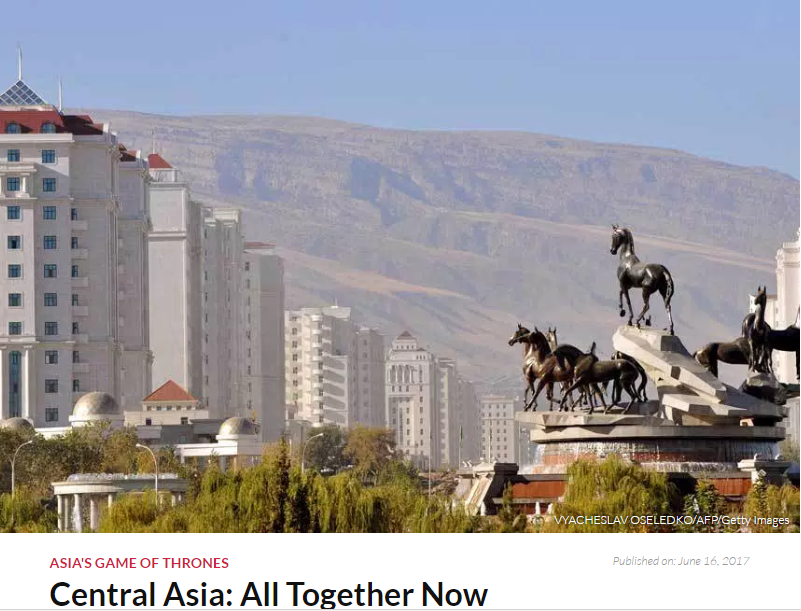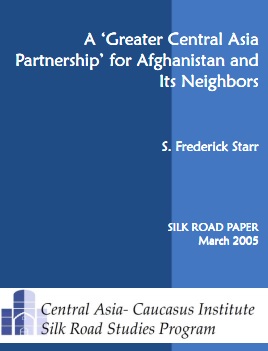Promise and Peril in the Caucasus
By Svante Cornell
March 30, 2023
https://www.afpc.org/publications/articles/promise-and-peril-in-the-caucasus
On January 27th, a gunman entered Azerbaijan’s embassy in Tehran, Iran, killed the embassy security officer and wounded two others. The episode received only fleeting coverage in the international media. In the wake of the incident, Azerbaijan’s President, Ilham Aliyev, openly accused “some of the branches of the Iranian establishment” of being responsible for the attack, and Baku promptly evacuated its embassy staff and dependents. It was a clear sign of the frictions between Azerbaijan and its not-so-friendly neighbor, Iran.
To be sure, relations between the two countries had deteriorated sharply since the fall of 2020, when Azerbaijan, using mainly Turkish and Israeli weaponry, succeeded in taking back territories long occupied by regional rival Armenia. In that conflict, Iran had played a distinctly unhelpful role, seeking to stall Azerbaijan’s military advances and providing covert support for Armenia. But the incident itself, as well as its fallout, is indicative of a larger realignment of power politics now underway in Eurasia – one with immense implications for U.S. interests.
Over the past two years, regional events have highlighted the importance of the Caucasus, the narrow isthmus between Iran and Russia that connects Europe to Central Asia through the Black and Caspian seas. America’s ill-conceived withdrawal from Afghanistan shut down hopes that landlocked Central Asian states would be able to open transport routes through that country, thereby connecting to the Indian subcontinent and the Indian ocean. Then, Russia’s invasion of Ukraine abruptly shut down the land transport corridor linking China to Europe through Kazakhstan, Russia and Belarus. Suddenly, the only land route linking China and Central Asia to Europe is the one that passes through the Caucasus.
But while America has paid increasing attention to Central Asia in recent years – Secretary of State Antony Blinken visited the region in February – it has all but ignored the three countries of the Caucasus. This, in spite of the region’s growing importance in relation to Central Asia, and to the countering of Iran.
Indeed, the Caucasus is a region where alignments don’t fit easily into preconceived notions. Iran has supported Christian Armenia against Muslim Azerbaijan, largely because up to a third of Iran’s own population consists of Turkic-speaking Azerbaijanis, whom Iran fears may seek to separate and join up with their northern brethren. Conversely, Israel has developed strong relations with Azerbaijan, capitalizing on the staunchly secular nature of Azerbaijani society and its government’s efforts to promote inter-religious harmony. Israeli drone technology, for instance, was critical to Azerbaijan’s victory in the 2020 war.
Turkey’s shift has been dramatic, too. A decade ago, Islamist impulses led the Turkish government of President Recep Tayyip Erdogan to pursue an accommodation with Iran while expanding the country’s stature in the Middle East. Turkey’s support for political Islam, in turn, led to the collapse of its relations with Israel, Egypt, Saudi Arabia and the United Arab Emirates. But the war in Syria put Turkey and Iran on a collision course, while changing domestic politics over the past half decade have led Istanbul to adopt a foreign and security policy heavily influenced by the nationalist (rather than Islamist) preferences.
As a result, Turkey has mended fences with Arab nations and with Israel – a process that has been facilitated by Azerbaijan, which managed to keep excellent relations with both Jerusalem and Ankara throughout. More important, from an American perspective, is the fact that Ankara has emerged as the strongest regional counterweight to Iran. Last December, the Turkish defense minister supervised joint military exercises along the Azerbaijani border with Iran, responding to drills that Tehran had organized only weeks prior in which Iranian forces practiced an invasion of Azerbaijan. Turkey and Azerbaijan now have a defense pact – something that has enabled Baku to speak up against Tehran in ways that were unthinkable a year ago.
Then there is Armenia. While Turkey and Azerbaijan are joining forces with Israel to counter Tehran, Yerevan finds itself stuck in an entente with both Tehran and Moscow dating back to the 1990s. Armenian Prime Minister Nikol Pashinyan has making noises about escaping Russia’s orbit of late, launching overtures to the U.S. and the European Union. But Russian influence in Armenia’s national security bureaucracy remains strong, as does Russian ownership of critical infrastructure in the country. More worrying is the fact that Armenia appears to have played a critical role in Iran’s transfer of drones and missiles to Russia for its war in Ukraine.
In the middle of it all is Georgia, previously America’s closest partner in the region. But in recent years, Georgia’s government – now under the control of a shadowy tycoon who made his fortune in Russia in the 1990s – has become increasingly skeptical of the West.
America’s national security bureaucracy separates the Caucasus and the Middle East into different bureaus, with Central Asia in yet another office. This is part of the reason the U.S. has failed to respond to the ways in which the regional politics of these regions intertwine. In view of the challenges posed by Russia and Iran, however, Washington’s confusion is no longer tenable. It is in America’s interest to encourage Turkey’s emergence as a counterweight to Iran, and to nurture the growing alignment between Ankara, Baku and Jerusalem. The U.S. also needs to work to recover its influence in Georgia, as well as to reinforce the efforts it began in late 2022 to bring about a peace agreement between Armenia and Azerbaijan. All of the above, however, requires a much stronger American commitment to the security and stability of the countries of the Caucasus.
Svante E. Cornell is the Director of AFPC’s Central Asia-Caucasus Institute.
Click here to download publication PDF
Central Asia: All Together Now
Central Asia: All Together Now
Bilahari Kausikan, S. Frederick Starr and Yang Cheng
The American Interest, June 16, 2017

A ‘Greater Central Asia Partnership’ for Afghanistan and Its Neighbors
By S. Frederick Starr
March 2005
Executive Summary
Afghanistan is approaching a turning point. Security is increasing, institutional renewal is progressing, the economy is growing, and an open political system is taking root at both local and national levels. It is no exaggeration to declare that Afghanistan is emerging as the first major victory in the international war on terrorism. But victory should mark not just an end—in this case to civil chaos – but also a beginning. To now, America has scarcely considered what further vistas victory may open, let alone how it should respond to them. This is the urgent need of the moment.
This paper proposes that progress in Afghanistan has opened a stunning new prospect that was barely perceived, if at all, when Operation Enduring Freedom was launched. This prospect is to assist in the transformation of Afghanistan and the entire region of which it is the heart into a zone of secure sovereignties sharing viable market economies, secular and relatively open systems of governance, respecting citizens’ rights, and maintaining positive relations with the U.S..
The emergence of this zone, referred to herein as “Greater Central Asia,” will roll back the forces that give rise to extremism and enhance continental security. It will bring enormous benefit to all the countries and peoples of the region, and, significantly, also to major powers nearby, notably Russia, China, and India, At the same time, it directly promotes U.S. interests by serving as an attractive model for developing Muslim societies elsewhere. Thus, the emergence of Greater Central Asia will open grand vistas that defy the usual zero-sum thinking.
Many of the greatest threats to Afghanistan today are regional in character:
- Instability exists to the east and southeast, and could arise from countries to the west or north if evolutionary processes are thwarted there or if any single outside power expands its influence and control in the region at the expense of a reasonable balance among them. Any such instability is bound to involve global powers.
- Also, many of the domestic challenges facing Afghanistan, including issues of security, governance, economics, and culture, are regional in character, and not purely national.
If significant foreign and domestic challenges facing the new Afghanistan are regional in scope, so are the solutions. Only a regional approach will enable Afghanistan to take advantage of the many commonalities and complementarities that exist between it and its neighbors.
The major potential engine of positive change for Afghanistan and its immediate and more distance neighbors is the revival of regional and continental transport and trade. The arrangements that make possible such trade exist only in embryonic form today.
To minimize the threats and maximize the potential, the U.S. must adopt a strategy very different from that which guided its forces in 2002, one that is framed in terms of long-term objectives rather than immediate needs. These objectives include:
1. Advance the war against terrorism and terrorist groups, building U.S.-linked security infrastructures (including necessary U.S. basing arrangements) on a national and regional basis, basing these on perceived mutual interests, and in such a way that the U.S. can use its presence there to respond to crisis in proximate regions such as South Asia and the Middle East.
2. Enable Afghanistan and its neighbors to protect themselves against radical Islamist groups, both foreign and domestic.
3. Assure that no single state or movement, external or internal, dominates the region of which Afghanistan is a part, and those resources which are its economic base.
4. Strengthen sovereignties by continuing to develop the Afghan economy and society and by strengthening trade and other ties between Afghanistan and its neighbors in the region.
5. Foster open, participatory, and rights-based political systems that can serve as attractive models for other countries with Muslim populations.
To pursue these objectives the U.S. should:
1. Adopt a “post-post 9:11 strategy that realigns all existing programs in Afghanistan and its neighbors with long-term goals and not just with the urgent but short-term needs that dominated after 9:11.
2. Adopt a systematic region-wide approach to U.S. security and developmental programs in Afghanistan and neighboring states.
3. Establish a permanent “Greater Central Asia Partnership for Cooperation and Development” (hereafter “GCAP”), led by a senior officer of the Department of State, that will coordinate and integrate the U.S.’ bilateral and region-wide programs in diverse fields, including economic and social development, governance, trade, counter-narcotics, anti-corruption, democracy, and transparency, as well as security. The GCAP should be proposed as a U.S. government entity but should be transformed, if the participants so desire, into an independent, multinational organization.
4. Engage Afghanistan and all regional states in GCAP activity as partners and on an a la carte basis.
5. Open GCAP activities to participation by other donor countries, as well to observers from other states with which the U.S. maintains normal relations.



